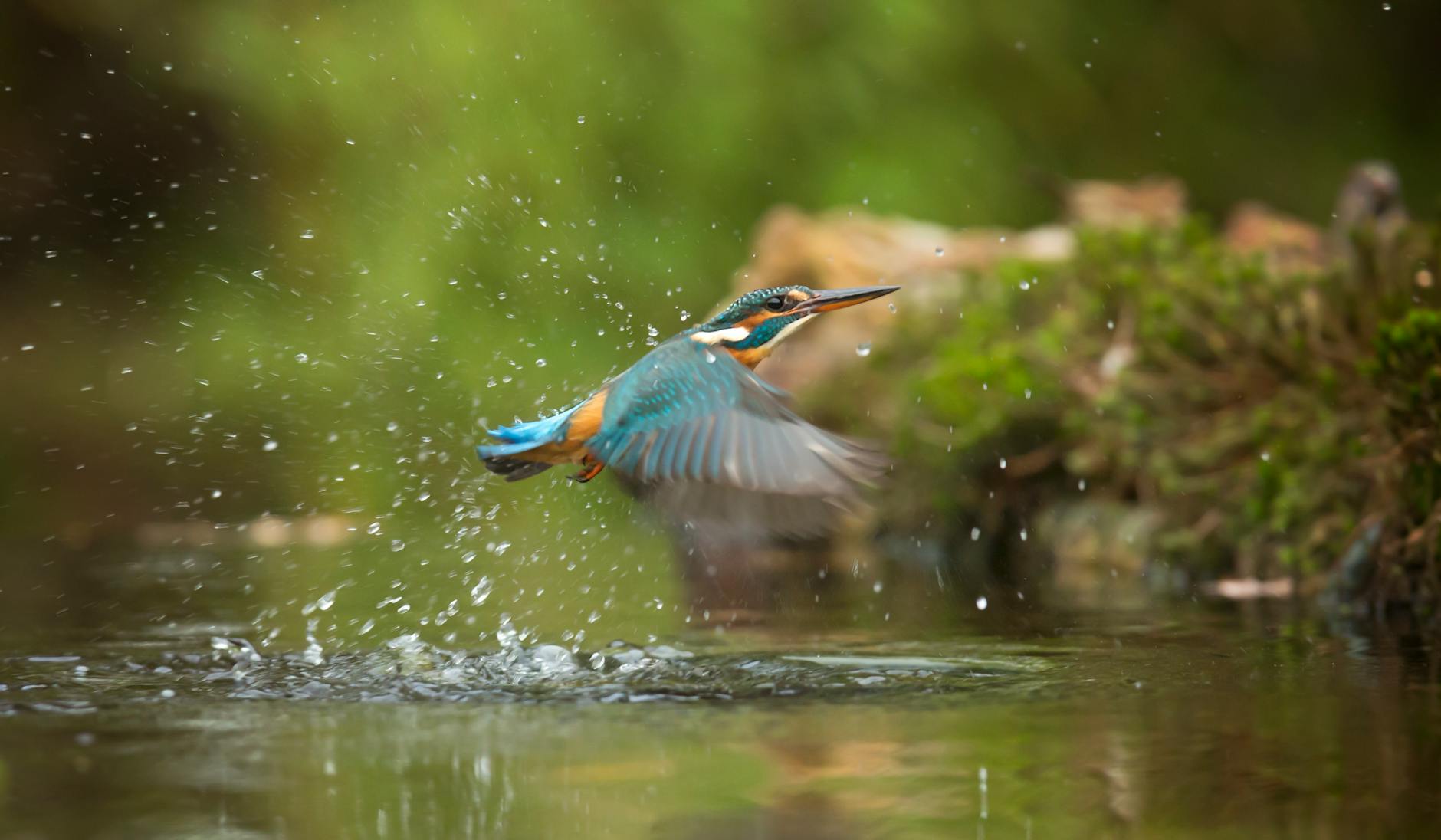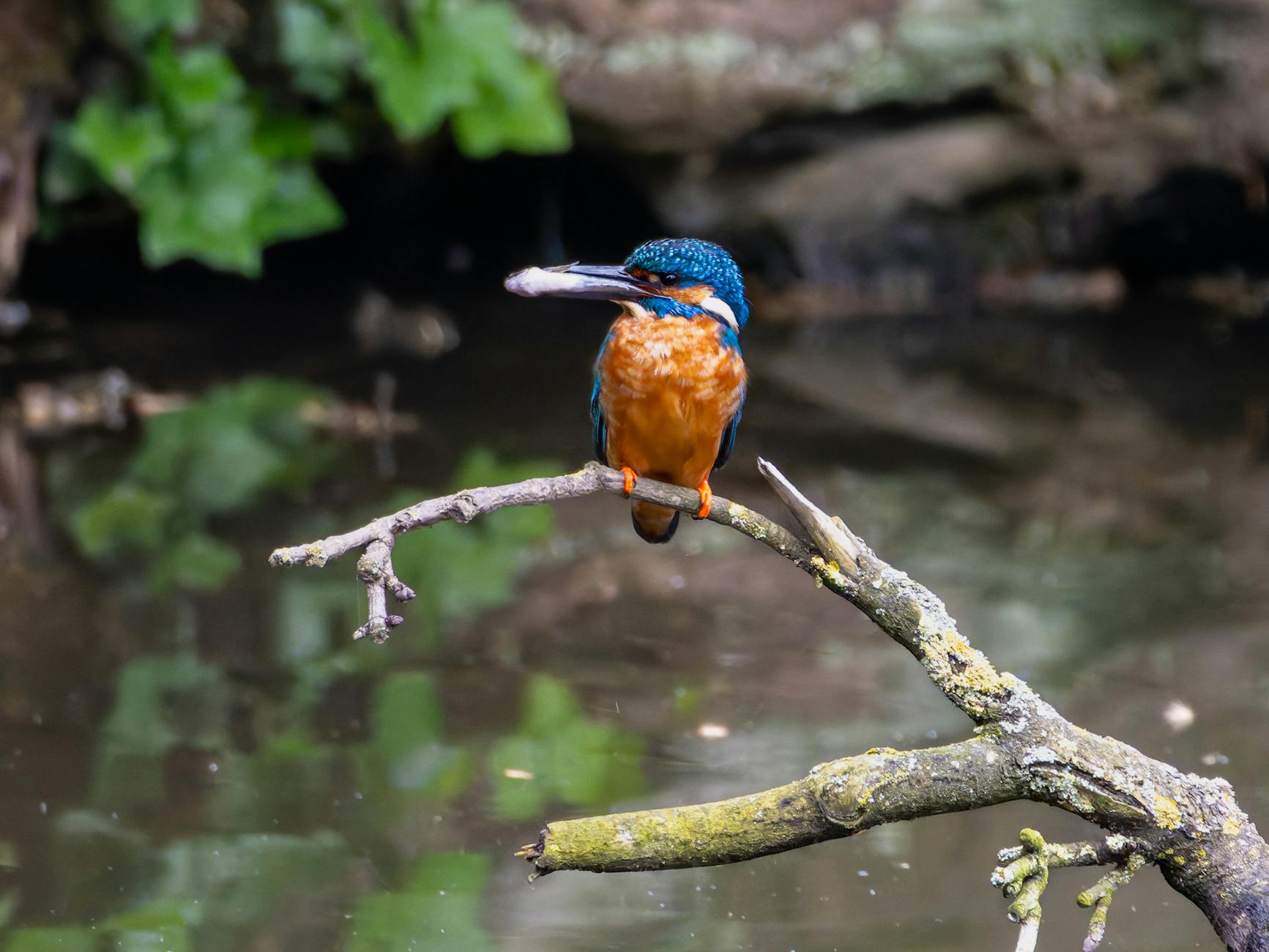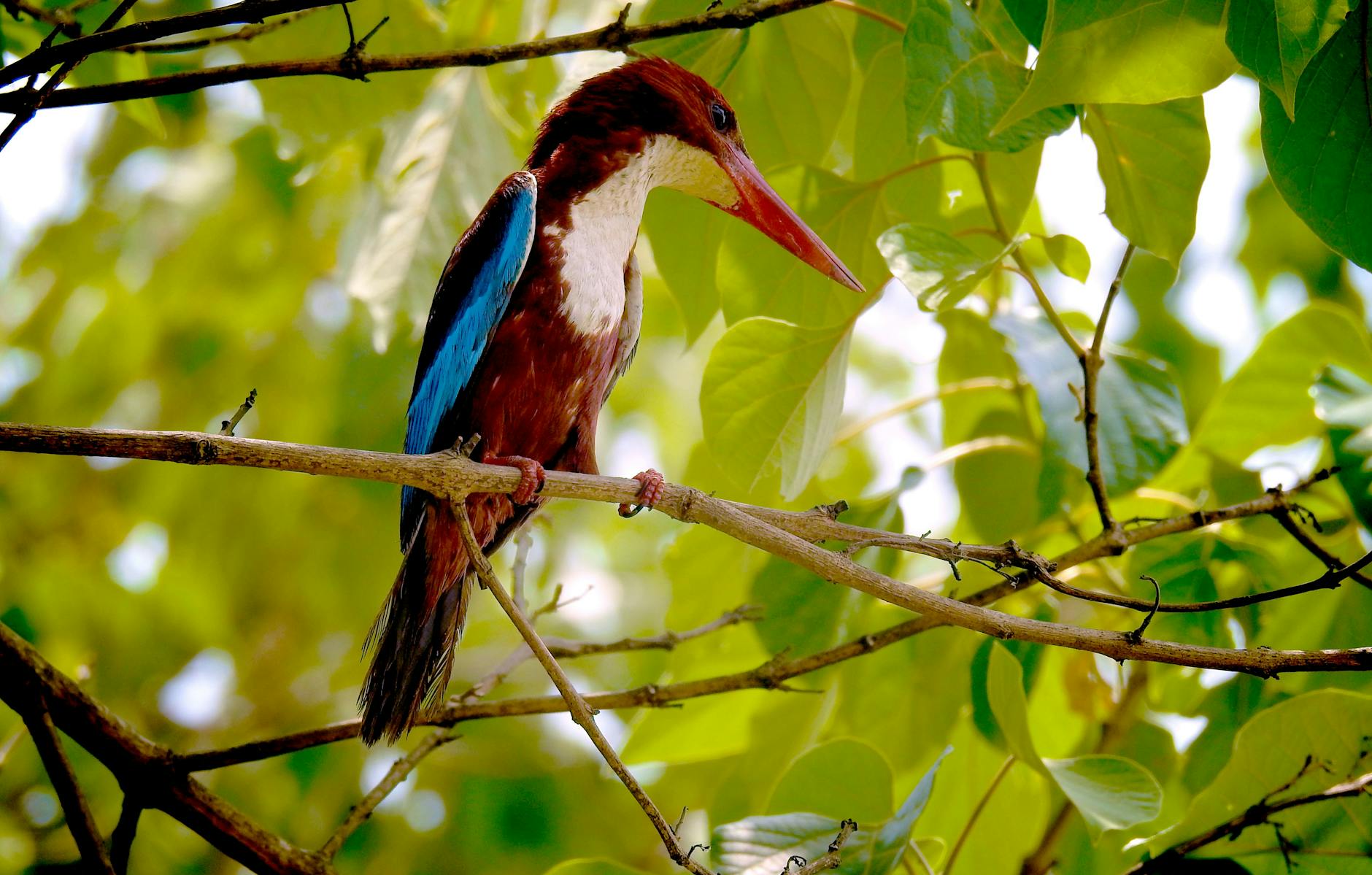How Fast Can a Kingfisher Dive? Fascinating Facts Uncovered
Kingfishers are remarkable for their ability to dive with incredible speed. They can plunge into the water at speeds of up to 40 kilometres per hour (around 25 miles per hour). This blog post will uncover the fascinating facts behind their diving techniques, the mechanics that make them such efficient hunters, and what sets them apart from other birds.
As we explore their unique adaptations, you’ll discover why these vibrant birds are not just visually stunning but also impressive in their hunting skills. Whether you’re a birdwatcher, nature lover, or simply curious about wildlife, there’s so much to learn about these extraordinary creatures. Join us as we take a closer look at the kingfisher’s impressive diving prowess.
Understanding Kingfisher Diving Mechanics
Kingfishers are remarkable divers, blending aesthetics with athleticism. Their adaptations allow them to thrive as hunters in aquatic environments. By understanding their body structure and diving techniques, we gain insight into their impressive capabilities.
Body Structure and Adaptations
The kingfisher’s body is meticulously designed for efficient diving. One of the most notable features is their streamlined shape, which reduces drag as they plunge into water. This aerodynamic design resembles that of a bullet, enabling them to cut through the surface with minimal resistance. Their elongated bills aid in catching prey, while their powerful muscles provide the necessary thrust for swift dives.
Adaptations extend to their eyes, which feature specialised cells that help reduce glare from the water’s surface. This means kingfishers can spot fish clearly, even in bright sunlight. The presence of a nictitating membrane—a thin, protective eyelid—allows them to shield their eyes from water pressure without losing sight of their target. This unique blend of adaptations results in a bird that dives not just effectively, but also safely while hunting.
For more on their adaptations, check out the article on the Beak That Inspired a Bullet Train.
Diving Technique
When it comes to diving, kingfishers employ a precise technique. They typically sit patiently on a perch, observing the water below. Once they spot a fish, they launch into a dive at tremendous speed. The key to their success is the headfirst plunge, which helps avoid injury upon impact with the water.
Kingfishers angle their bodies to reduce drag and maintain momentum during the dive. They often use their feet to brace for impact, bringing them down to the water with minimal disturbance. Their remarkable ability to gauge depth and distance allows them to adjust their angle mid-flight, ensuring precision in targeting their prey.
This technique is not only efficient but also effective, often resulting in a successful catch. You can read more about different diving techniques here.

Photo by Monique Laats
Speed of Kingfisher Dives
Understanding the speed of kingfisher dives is captivating. These birds are built for speed, allowing them to plunge into water with impressive accuracy. This section uncovers both the average and maximum speeds at which they can dive, providing a clearer perspective on their hunting prowess.
Average Diving Speed
Kingfishers are known for their exceptional diving capabilities, averaging speeds of about 40 kilometres per hour (25 miles per hour). This velocity is impressive, especially when compared to other birds. For instance, the peregrine falcon, renowned for its high-speed dives, can reach speeds of over 240 kilometres per hour (150 miles per hour) during aerial stoops. However, when considering their size and habitat, the kingfisher’s speed is remarkable.
To put this into perspective, many other birds such as ducks and geese typically dive at speeds of around 15 to 25 kilometres per hour (9 to 15 miles per hour). The agility and speed of kingfishers enable them to catch slippery fish with remarkable efficiency. Their unique adaptation allows them to strike with precision, often resulting in successful hunts. For more insights on bird diving speeds, check out this article on science news.
Maximum Recorded Speeds
In terms of maximum recorded speeds, kingfishers can reach up to 43 kilometres per hour (27 miles per hour) during a dive. This speed is critical when they target fish, allowing them to penetrate the water’s surface swiftly and efficiently. Observations show that a common kingfisher can perform these high-speed dives repeatedly throughout the day.
Instances of maximum speeds highlight the extraordinary capabilities of these birds. Factors like body structure and diving techniques play significant roles in achieving these velocities. Kingfishers tilt their bodies for optimal entry into the water, minimising resistance and maximising their chances of a successful catch. For in-depth studies on kingfisher speeds, explore this resource from Riverlink.

Photo by Siegfried Poepperl
Impact and Challenges of Diving
Kingfishers are extraordinary creatures, famed for their high-speed dives. However, these rapid plunges come with significant impacts and challenges that affect their physiology and hunting capabilities.
Physical Impact on the Body
When kingfishers dive into water at speeds up to 40 kilometres per hour (25 miles per hour), the physical impact on their bodies can be severe. The force of hitting the water at such velocities risks causing concussions and other injuries. Their unique adaptations, both anatomical and physiological, help mitigate these risks.
For instance, research indicates that kingfishers have evolved specific genetic traits that cushion their brains during these high-speed dives. Studies suggest that modifications in brain structure and fluid dynamics within their skulls assist in absorbing shock and reducing the likelihood of injury. This remarkable evolutionary trait allows them to dive headfirst without significant impairment, making their hunting strategy both effective and sustainable. For a deeper understanding of this phenomenon, see Smithsonian Magazine’s article.
Avoiding Injury
To avoid injury during their dives, kingfishers exhibit several adaptations and behaviours. Their streamlined bodies are designed to reduce drag, facilitating smoother entries into water. The position of their wings and feet is crucial; they tuck their wings close to their bodies and extend their feet for a controlled entry. This positioning helps them minimise the impact upon hitting the water surface.
Additionally, kingfishers possess a nictitating membrane that protects their eyes from harsh water pressure during dives. This unique feature allows them to maintain vision and focus on their prey while sheltering their eyes from injury.
Their hunting methods also play a vital role in injury avoidance. By diving vertically and angling their bodies correctly, they ensure their beaks penetrate the water first. This technique reduces the likelihood of trauma to their heads and bodies. For further insights into kingfishers’ diving abilities, check out this informative piece from Science News.

Photo by Pixabay
Fascinating Facts About Kingfishers
Kingfishers are vibrant birds that capture our attention not just with their colours but also their captivating lifestyles. From their preferred habitats to their hunting techniques, kingfishers are truly fascinating creatures that warrant exploration.
Habitat and Behaviour
Kingfishers prefer habitats near water bodies like rivers, lakes, and ponds. These locations provide ample food sources and ideal nesting conditions. They usually nest in burrows along earthen banks, which offer safety from terrestrial predators.
These birds are excellent fliers, often seen darting above the water or perched quietly, scanning for prey. Their behaviour is largely solitary, although they may form loose colonies during the breeding season.
Key points about their habitat and behaviour include:
- They thrive in unpolluted, clear waters to spot fish and crustaceans.
- Kingfishers are territorial. Males often chase away rivals to protect their feeding and nesting areas.
- They are skilled hunters, relying on keen eyesight and precise diving techniques.
For more insights on kingfisher habitats, visit the Audubon Field Guide.

Photo by Pixabay
Diet and Hunting Techniques
The diet of kingfishers primarily consists of fish, crayfish, and aquatic insects. They are recognised as adept hunters, using various techniques to secure their meals.
One of the most captivating aspects of their hunting strategy is their ability to dive. Here’s how they do it:
- Perching: They often perch on a branch or the edge of a water body to scout for movement.
- Spotting Prey: Their excellent vision allows them to detect fish even in murky waters.
- Diving: Once a target is visible, they dive headfirst, often reaching speeds of up to 40 kilometres per hour.
Their hunting technique includes slamming their catch against hard surfaces to stun or kill it before swallowing. This method enhances their success rate, ensuring they get the most out of their dives. For more on kingfisher diets and behaviours, check out Bird Fact.

Photo by Siegfried Poepperl
Conservation and Preservation
Kingfishers face numerous challenges in the wild, impacting their populations and habitats. Addressing these threats is essential for ensuring the survival of these stunning birds.
Threats to Kingfishers
Several factors jeopardise kingfisher populations. Some of the major threats include:
- Habitat Loss: Urban development, agriculture, and deforestation destroy essential habitats for kingfishers. Without suitable nesting and foraging areas, their numbers decline.
- Pollution: Water pollution, particularly from agricultural runoff, impacts their food sources. Contaminated waters lead to a decline in fish populations, which directly affects kingfishers’ survival.
- Predation: Kingfishers have natural predators like cats, rats, and birds of prey. Increased predation pressure can significantly impact small populations.
- Human Disturbance: Nesting kingfishers are sensitive to human activity. Disturbances during breeding seasons can cause them to abandon nests, leading to reduced reproductive success.
These factors amplify the challenges kingfishers face as they attempt to thrive in their environments. For more details, read about the 5 challenges kingfishers face & how to help them.
Conservation Efforts
To combat these threats, various conservation initiatives aim to protect kingfishers and their habitats. Key efforts include:
- Habitat Restoration: Projects focus on restoring wetlands and riverbanks to create conducive environments for kingfishers. This ensures they have safe nesting sites and abundant food sources.
- Public Awareness Campaigns: Raising awareness about the importance of kingfishers promotes community involvement in conservation efforts. Educating the public can lead to changes in behaviour that protect these birds.
- Legislation: Conservation laws help protect nesting sites and restrict activities that harm kingfisher habitats. Stringent regulations support the sustainable management of natural areas.
- Species-Specific Initiatives: Specific efforts target endangered species like the Guam kingfisher. Projects focus on breeding programs and habitat recovery to return these birds to their natural environments. Details about such projects can be found on the Guam Kingfisher Conservation page.
Conservation is a collaborative effort, and every action counts. The survival of kingfishers relies on our commitment to preserving their environments and minimising threats to their existence.

Photo by mali maeder
Conclusion
The kingfisher’s ability to dive at astonishing speeds highlights its unique adaptations and hunting skills. With maximum speeds reaching up to 43 kilometres per hour, these birds are truly remarkable in their efficiency and precision while hunting underwater.
Kingfishers play an essential role in maintaining the balance of aquatic ecosystems, helping control fish populations and supporting biodiversity.
As you reflect on these fascinating facts, consider how conservation efforts can protect such extraordinary species. What other bird behaviours or adaptations pique your curiosity? Share your thoughts and let’s explore the avian world together!










